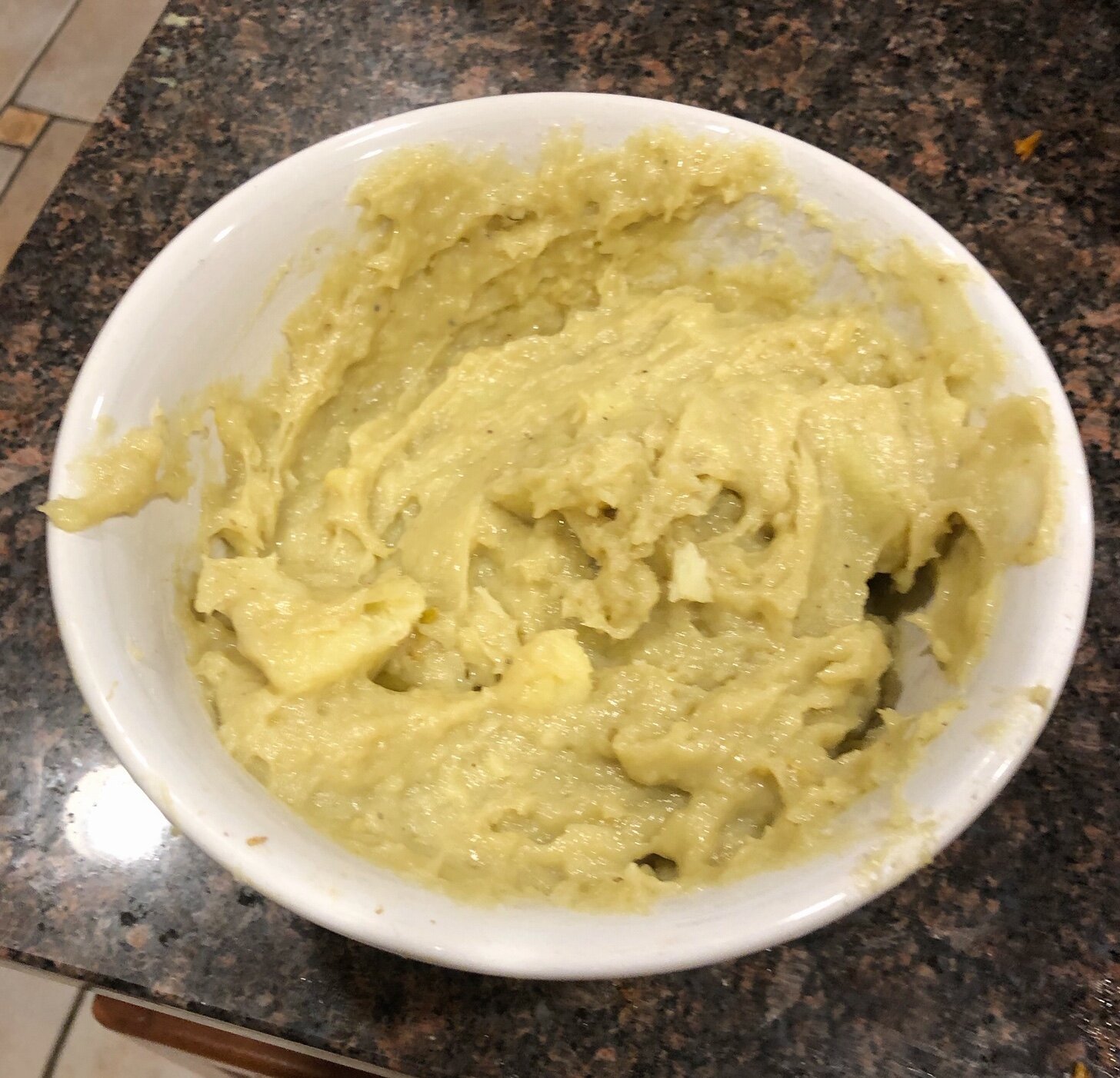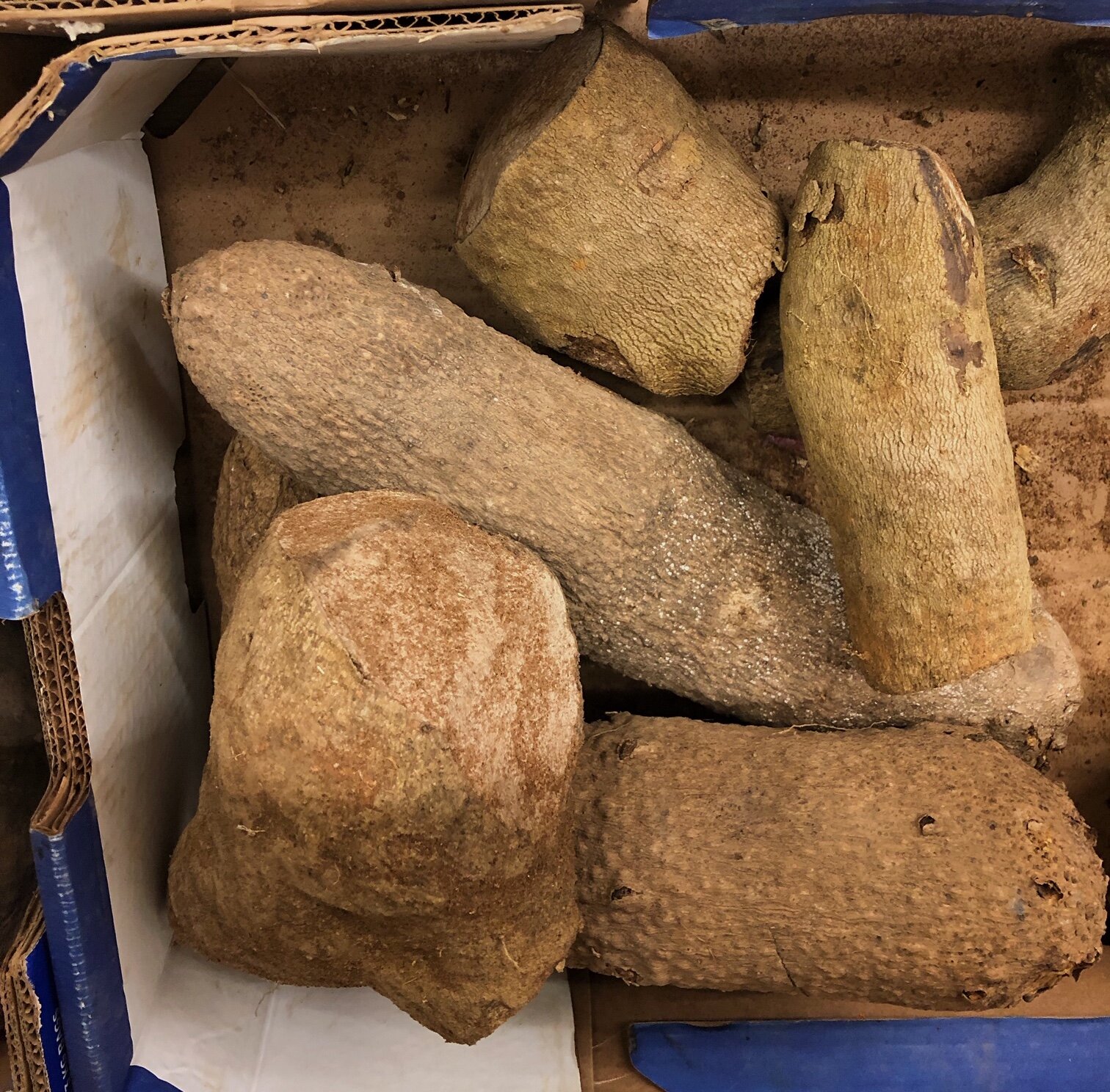Nigeria: From Savory Bananas to Yam Festivals
The reasoning for this post may seem a little random at first — since neither my family nor I have had much experience with Nigeria. My posts, so far, have mostly centered around Asian cuisine as it is the region I am most familiar with.
But then, Cook-in’ Quarantine is all about stepping outside of my comfort zone and discovering new cultures through their cuisine. So I am traveling a bit far from my roots... to African cooking! For this post I am exploring Nigeria, a country I am hoping to learn more about through it’s food.
I decided to make three dishes: Jollof rice (a brightly colored and flavored rice), Dodo (fried savory plantains) and Fufu (pounded yam).
JOLLOF RICE
Origin:
The origin of Jollof rice is actually quite controversial. Although it is served in Nigeria, it is also popular in other African countries. Nigeria, Ghana, and Senegal are all contestants to the Jollof’s origin. While the dispute over the ownership is ongoing, each country’s version and twist on the dish vastly varies. For this post, I used a Nigerian recipe, although I would love to try the Ghanaian and Senegalese variations as well!
In Nigeria, Jollof rice is treated as a celebratory dish and plenty is made to feed a number of hungry guests. It’s full of spices and complex flavors and is often served as the center of a meal. Outside of special occasions, the rice dish is also sold by street vendors all over the continent.
Process:
Jollof rice was the hardest part of the dinner to make. It had many steps and needed multiple ingredients for the flavor and aroma to develop. It’s known for its rich, distinct flavor, bright orange color and chock-full of spices.
The first step was to make the Obe Ata, a tomato-based sauce that is mixed in with the rice. First I blended the tomato to create a puree and then combined it with the other Obe Ata ingredients in a saucepan over medium heat. The recipe called for Habanero peppers but I knew I couldn’t handle that much heat so I substituted it with bird chilies.
I then sauteed diced onions till they turned translucent and eventually caramel colored.
I mixed the onion, the Obe Ata sauce, the rice, and chicken bone broth, along with the rest of the ingredients in a dutch oven. I then put the rice mixture - while it was inside the covered cast iron dutch oven - inside our preheated oven to cook.
Once the oven timer went off, I took Jollof rice out of the oven, and let it sit for a few minutes to cool. When I took the cover off of the dutch oven, rich bright orange Jollof rice was revealed! I gave the rice a good stir, mixed in some sauteed onions and it was ready to serve!
Taste:
The recipe I picked made way more rice than the three of us could eat in one sitting. But no one was complaining! The Jollof rice was hands down my favorite part of the plentiful meal, and I couldn’t stop myself from keep going back for additional helpings. It wasn’t particularly hot because I had decided against using Habanero peppers. It was meticulously seasoned and delicious and was enjoyed for many days after as leftovers.
The perfect combination of flavors and spices, this is definitely one of my favorite rice dishes. I would 100% recommend trying this. It’s dishes like these that really make me appreciate different cultures, and reminds me what a privilege it is to experience them through their loved cuisine.
DODO (or Fried Plantains):
Origin:
Plantains are a staple in Africa, the Caribbean, and Asia. The fruit is often compared to bananas (its close relative) but is often treated as a vegetable or ingredient for savory dishes due to its starchy flavor when unripe. Plantain leaves are also commonly used as wraps for tamales and seasoned meat because of their aromatic smell.
Fried plantains are snacks typically eaten alone or served as a side dish in African cooking. However, it is not exclusive to Africa. Plantains are now expanding to other countries because of their large size and plethora of flavors (they transition from starchy to sweet throughout their ripening). And fried plantains (both sweet and salty varieties) are growing in popularity.
Process:
This was an easy, practically one-ingredient recipe to make. Since plantains aren’t common in American groceries, we made sure to get a few unripe plantains when we stopped by the Asian store near our home. They were much bigger than I expected but were easily identifiable.
First, I set a pan on the highest heat setting (to save some time while frying). Next, I poured in some oil, and let it heat up for a few minutes. Meanwhile, I cut the plantains into coins and placed them into the hot oil. Once the bottom browned (you can tell by looking at the sides near the pan, they should eventually grow darker until they reach a golden-brown), I flipped the coins and repeated the same process on the other side.
I used a small pan so the plantains wouldn’t burn while I was flipping them over, meaning I could only really fry five or six plantains at once. However, since the stove was on the highest setting, the process still went by very quickly, and I was having to frantically flip and replace the coins to keep them from burning.
Although the high temperature hastened the process, I wouldn’t recommend it. You can still fry the plantains fairly quickly without heating the pan at the highest possible stove setting. Not only will they most likely burn, but at that temperature, the oil will be bubbling at a very intense rate. The hot oil flew out of the pan and landed on me multiple times, and even as I avoided getting burned, I was constantly trying to avoid having the oil land on me, which made flipping the plantains very hard to do.
Finally, they finished frying and I set them on a paper towel to absorb some of the excess oils and let the plantains cool. When I was finally done, I salted the fried snack and put them on a plate to serve.
Taste:
The plantains were actually pretty sweet! We had bought the ingredients a few days before I made the dinner, so the plantains had ripened a little bit. Also, we went to an Asian store to buy the plantains, and the variety of plantain might have contributed to this certain species of plantain being a little sweeter (since plantains are mostly used in sweets and desserts in Asia).
The salt created a really nice sweet and salty combination, and although the flavors were a little unexpected, I really enjoyed them with the jollof rice! It would also work great on its own as a filling snack or appetizer.
FUFU (or Pounded Yam)
Origin:
Yam is cultivated all around the world. In Asia, yam is often used as a sweet ingredient, in ice creams and various other desserts. Often, yam here in the United States, is candied or baked into other desserts, such as “thanksgiving yams” or “yam pie”, a popular American dish that’s baked around the Thanksgiving holiday. However, yam is often substituted with sweet potato because it is not found easily outside these climates.
Africa is the biggest producer of yam, accounting for 95% of production worldwide.There are even yam festivals all around Africa to celebrate the tuber. Yam is a huge part of Nigerian cooking but the harvest is what’s celebrated during The New Yam Festival. The food staple is commemorated through yam planting competitions, and other customs such as wearing traditional clothing and cooking yam dishes.
Pounded yam is special in Nigerian culture, and is typically served with soups or stews as a starchy side dish.
Process:
Pounded yam can be a time-consuming dish to make, however it is fairly simple. The main ingredient is, of course, yams. Other than that, the only thing needed is water and a pinch of salt.
Although pounded yam is really only a one-ingredient dish, yam is not commonly grown in the US, making it hard to find in American stores. The yams were mislabelled at the Asian grocery store, so it took some time to find. We found “Yellow Yans” (which I understood to mean yellow yams).
First, the yam has to be peeled. Then it is cut into small chunks and boiled in water to soften. Once the chunks are softened, they’re pounded into a dough. The dough is typically pounded with a mortar and pestle. However, with the other dishes on my plate I decided to instead process the yam to save some time. Yet, food processing the yam was harder than I expected. Although there was way less arm power used, the blender kept overheating and getting stuck because the yam mixture was too thick for the blades.
Taste:
Although all of the Nigerian dishes were unique, I did not enjoy the pounded yam. It was fairly bland, with the bitter aftertaste which came through prominently. However, I wouldn’t go so far as to condemn yams or even the dish. There were likely many factors that affected how it tasted. This was my first time working with yams, so I’m not sure how ripe they were, if those were the right yams to use, if I used enough salt, etc. Also, pounded yam is not supposed to be eaten on its own; accompanied by soups or stews, I’m sure it would taste very different. If it was served with a stew/soup I would definitely give it another chance.
This post gave me a chance to try my hand at making a cuisine that I’d never even tasted before. The new flavors and ingredients definitely tested my cooking skills, but if anything it helped me grow as an amateur chef. The different cooking style and unique tastes have inspired me to expand my horizons and try new things in the kitchen.















